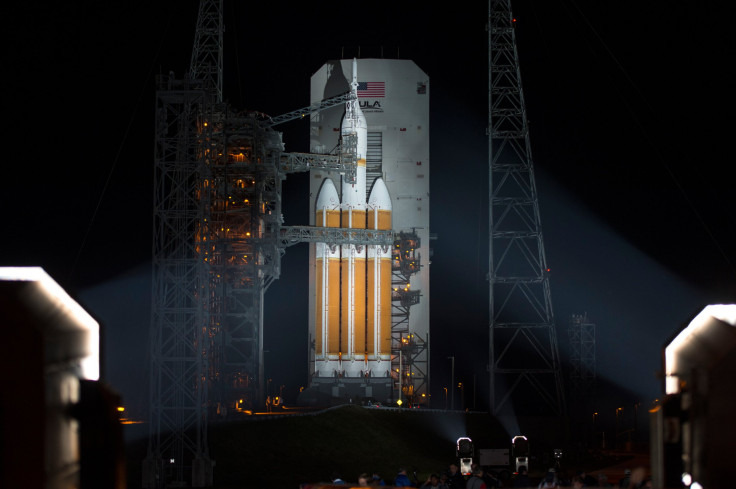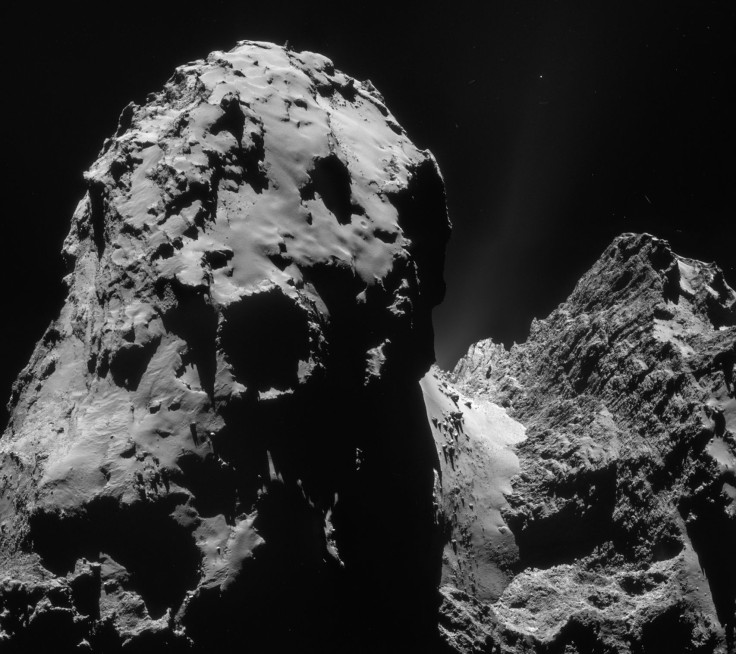The Year In Science: The Top Discoveries And Breakthroughs Of 2014

It's easy to forget the many great scientific achievements that happened in 2014, but that's what year-end lists are for. Many publications hailed the European Space Agency's Rosetta mission and comet landing and the first test flight of NASA's Orion, but what else was noteworthy in science?
Gravitational Waves (Almost)

The scientific community experienced a roller coaster of emotions surrounding the groundbreaking discovery of gravitational waves, whose existence was first predicted by Einstein in 1916. Researchers from the Harvard-Smithsonian Center for Astrophysics announced they discovered these "ripples in space-time" that were sent out almost immediately after the Big Bang. The scientists used the BICEP2 telescope, located at the National Science Foundation’s South Pole Station, to detect a unique signature in the cosmic microwave background, the "afterglow of the Big Bang."
The discovery created excitement that was on par with that of the Higgs boson elementary particle in 2012. Unfortunately, the amazing find turned out to be nothing more than cosmic dust. But the setback does not spell doom for the researchers' pursuit of gravitational waves, and BICEP2 could still find the elusive signature in the CMB. Scientific American, io9 and the Guardian noted the nondiscovery in their year-end lists.
A Nearly Perfect Comet Landing

You may have heard by now, but we totally landed on a comet. The European Space Agency spent more than a decade on the Rosetta mission to accomplish the feat. The first part involved placing the Rosetta spacecraft in a trajectory to intercept comet 67P/Churyumov-Gerasimenko; the craft was then put into hibernation for three years, and finally reawakened in January 2014. Rosetta successfully rendezvoused with the comet over the summer, and everyone was watching in November when ESA attempted to place landing apparatus Philae onto the comet.
Philae had a bumpy landing and ended up on its side and in a crater. The lander was unable to obtain enough sunlight to remain functional, and activity had to be suspended. Luckily, the lander uploaded plenty of valuable data before turning off -- including the detection of organic molecules and clues to the mystery of the origin of water on Earth. ESA scientists are hopeful Philae can be turned on as the comet gets closer to the sun in the coming months. The comet landing was Science's breakthrough of the year.
NASA's Big Year
NASA's Orion spacecraft successfully completed its first test flight in December. The space agency will use Orion in its upcoming manned mission to Mars. NASA's "Giant Leap Forward" will include an Asteroid Redirect Mission (ARM) in the 2020s and a manned mission to the Red Planet in the 2030s.
NASA will attempt to capture an asteroid and place it in a safe orbit near the moon. After the asteroid is captured, Orion will be used to fly astronauts to the object, where they will collect samples and return them to Earth.
The space agency's big year also included the launch of the Mars Atmosphere and Volatile Evolution (MAVEN) spacecraft, the Global Precipitation Measurement mission and the Orbiting Carbon Observatory-2 satellite.
In terms of discoveries, the Kepler mission discovered an exoplanet that's Earth-like in size and orbits within the "habitable zone" of its host star. The Curiosity rover made a huge discovery when it detected methane spikes in Mars' atmosphere and organic compounds in a rock sample.
Other Notable Discoveries And Breakthroughs
- The oldest known example of art was found on a seashell that's more than 500,000 years old.
- The discovery of Dreadnoughtus, a dinosaur that was seven times heavier than Tyrannosaurus rex.
- An animal study in which young blood from a mouse reversed cognitive decline in older mice has the scientific community hopeful the research could lead to treatments for humans.
© Copyright IBTimes 2024. All rights reserved.






















